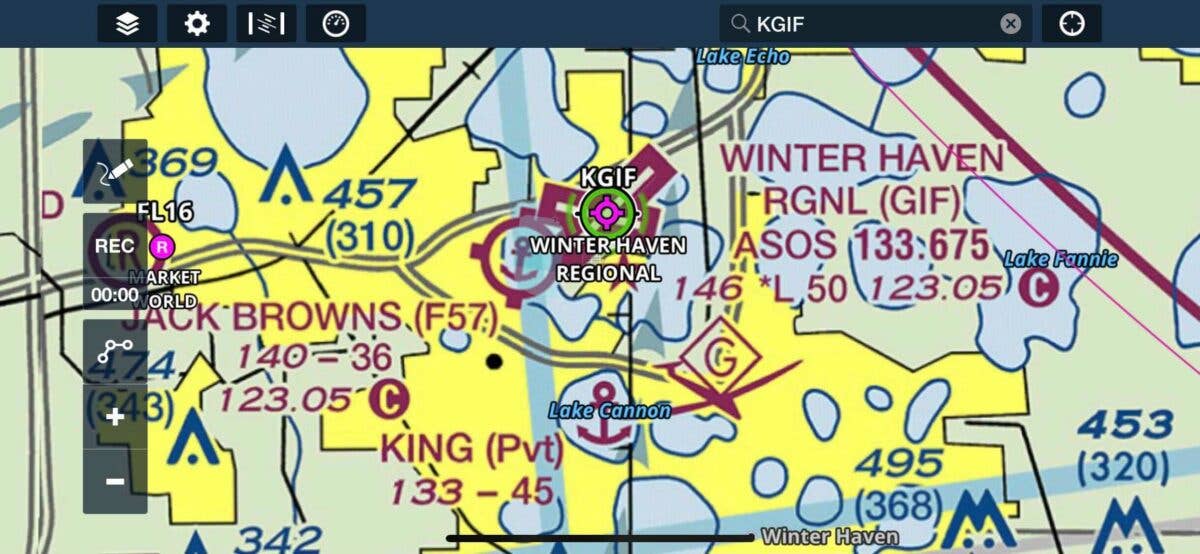NTSB Releases Details of Florida Midair Collision
The airspace where the collision occurred does not require the use of radios or pilot communication, NTSB said.

According to an NTSB preliminary investigation, the J-3 Cub was in a normal corridor for approach to land on the lake, while the Piper Cherokee was performing a short approach to Runway 29 at Winter Haven Regional Airport. [Credit: Foreflight]
The midair collision between a Piper Cherokee and a J-3 Cub on floats that killed four people in Winter Haven, Florida, Tuesday may have occurred when both aircraft were attempting to land, according to a National Transportation Safety Board (NTSB) preliminary investigation.
According to NTSB, the pilot of the Cherokee, which was operated by Sunrise Aviation on behalf of Polk State College, was attempting to land on Runway 29 at the Winter Haven Regional Airport (KGIF). The pilot of the J-3 Cub was attempting to land at Jack Brown's Seaplane Base (F57).
Those killed in the accident were identified as Faith Irene Baker, 24, of Winter Haven, a pilot/flight instructor with Sunrise Aviation; flight student Zachary Jean Mace, 19, of Winter Haven; Louis DeFazio, 78, of Winter Haven; and 67-year-old Randall Elbert Crawford, of Carlisle, Pennsylvania.
"The J-3 Cub was in one of normal corridors for approach to land on the lake and the Cherokee was performing a short approach to Runway 29, which involves a tighter turn and closer to the runway and steeper descent angle" than a normal approach, NTSB lead investigator Lynn Spencer said during a media briefing Thursday afternoon.
Spencer stressed that the maneuver is taught to all pilots as part of their training in the event they have an uncommanded loss of engine power. "It is a normal emergency maneuver," she said, adding that the student pilot aboard the Cherokee was training for a commercial pilot certificate.
"The Cherokee was in a left descending turn and came nose to nose with the Cub, which attempted an evasive maneuver," said Spencer, adding that the NTSB will be looking at the equipment of each airplane.
According to Spencer, the pilot of the Cherokee was self-announcing location and intention, and the Cub pilot was not.
"This might indicate the Cherokee was unaware of the Cub, or the Cub could not hear the Cherokee," she said.
Spencer notes that the airspace (Class Echo) where the collision occurred does not require the use of radios or pilot communication. The J-3 Cub does not have an electrical system and as such, does not have a built-in radio. Pilots who fly Cubs in airspace that requires a radio or who desire a radio usually carry a battery-operated hand-held device.
After the aircraft are removed from the lake they will be transported to a security facility in Jacksonville where the wreckage will be studied.
In particular, investigators want to determine the impact angle, as the Cherokee is a low-wing design and the Cub a high wing. If the Cherokee is above the Cub, the wings of both aircraft create a blindspot, which can limit a pilot's ability to see and avoid the other traffic.
The FAA is also part of the investigation. The NTSB said it expects to release a preliminary report in a few weeks.

Sign-up for newsletters & special offers!
Get the latest FLYING stories & special offers delivered directly to your inbox






